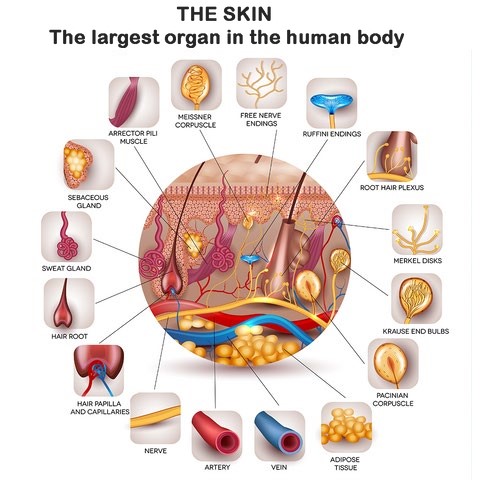Which of the following describes the process of osmosis?
Movement of substances from an area of high concentration to an area of low concentration.
Movement of substances against a concentration gradient with the help of transport proteins.
Movement of water molecules from an area of high concentration to an area of low concentration through a selectively permeable membrane.
Movement of substances into a cell by engulfing them with the plasma membrane.
The Correct Answer is C
Choice A reason: Movement of substances from an area of high concentration to an area of low concentration describes simple diffusion, not osmosis. Simple diffusion involves the passive movement of molecules (other than water) down their concentration gradient, directly across the cell membrane. This process doesn't require energy and isn't specific to water molecules. Substances like gases (oxygen and carbon dioxide) and small, nonpolar molecules often move in this way to reach equilibrium.
Choice B reason: Movement of substances against a concentration gradient with the help of transport proteins defines active transport, not osmosis. Active transport requires energy, typically in the form of ATP, to move molecules from an area of low concentration to an area of high concentration. This is the opposite of passive processes like diffusion and osmosis. Examples include the sodium-potassium pump that maintains the electrochemical gradient in nerve cells, and the transport of glucose into cells of the intestines and kidneys.
Choice C reason: This is the correct description of osmosis. Osmosis specifically refers to the movement of water molecules
through a selectively permeable membrane. The membrane allows water molecules to pass through while preventing the movement of solutes (like salts and sugars) to maintain a balance of water on both sides of the membrane. This process is crucial for maintaining cell turgor in plants, regulating fluid balance in tissues and organs, and facilitating nutrient absorption and waste removal in all living organisms. Osmosis is a vital physiological process because it helps cells maintain their shape and function by controlling internal water balance.
Choice D reason: Movement of substances into a cell by engulfing them with the plasma membrane is known as endocytosis, not osmosis. Endocytosis is an active process where cells internalize large particles, such as nutrients and pathogens, by engulfing them with the cell membrane to form a vesicle. There are two main types of endocytosis: phagocytosis ("cell eating") for large particles like bacteria, and pinocytosis ("cell drinking") for fluids and small molecules. This process requires energy and is used by cells to intake essential nutrients, clear away debris, and defend against pathogens.
Nursing Test Bank
Naxlex Comprehensive Predictor Exams
Related Questions
Correct Answer is D
Explanation
The largest organ in the human body by surface area is the skin. It covers the entire external surface of the body and has an average surface area of about 20 square feet in adults.

Correct Answer is C
Explanation
The molecular geometry of a molecule of Sulphur dioxide (SO2) is bent or V-shaped. This is because of the presence of two lone pairs on the sulfur atom, which cause repulsion and distort the bond angles in the molecule.
SO2 has a central sulfur atom bonded to two oxygen atoms by double bonds. The two double bonds and the two lone pairs of electrons on the sulfur result in a trigonal planar arrangement of electron pairs around the sulfur atom. However, the repulsion between the lone pairs causes the two oxygen atoms to be pulled closer together, resulting in a bent or V-shaped molecular geometry.
The bent molecular geometry of SO2 affects its properties, such as its polarity and reactivity. SO2 is a polar molecule due to the asymmetric distribution of electrons, which results in a partial positive charge on the sulfur atom and partial negative charges on the oxygen atoms. This polarity makes SO2 a good solvent and reactant in chemical reactions, as well as a contributor to air pollution and acid rain.

Whether you are a student looking to ace your exams or a practicing nurse seeking to enhance your expertise , our nursing education contents will empower you with the confidence and competence to make a difference in the lives of patients and become a respected leader in the healthcare field.
Visit Naxlex, invest in your future and unlock endless possibilities with our unparalleled nursing education contents today
Report Wrong Answer on the Current Question
Do you disagree with the answer? If yes, what is your expected answer? Explain.
Kindly be descriptive with the issue you are facing.
